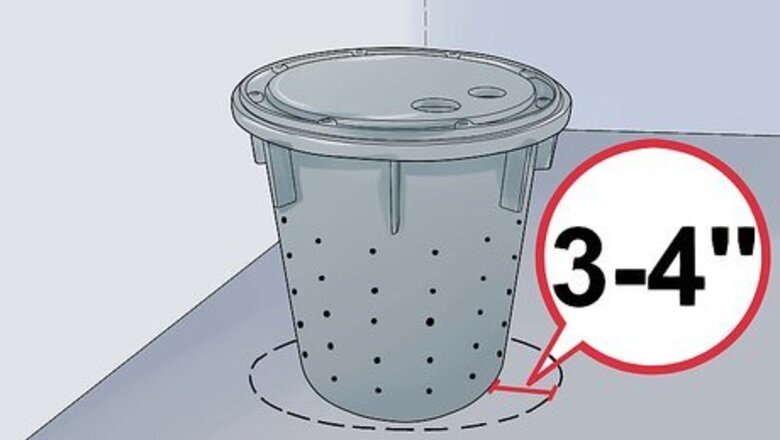
views
Digging the Sump

Trace the outline of the sump liner on the floor. Leave a 3–4 inch (7.6–10.2 cm) gap around the liner to make it easier to fit the liner in the hole (you will fill in the gap with gravel and concrete later).
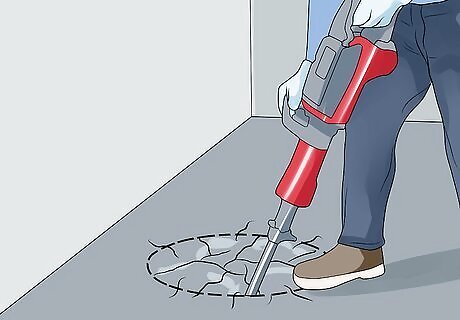
Remove the concrete floor. This can be relatively quick work with an electric jackhammer, if you can rent one. Cut the concrete you're removing into manageable pieces and avoid just shredding the concrete. When you've got squares cut, move the jackhammer at an angle to pry up the pieces and remove them from the area. Alternatively, you can make do with a hammer drill rigged with a masonry bit, a good sledgehammer, and a masonry chisel. Using the largest masonry drill bit you can chuck in the drill, begin making holes every few inches in the concrete along the outside perimeter, then use the hammer and chisel to crack the concrete between the holes. Continue drilling holes and hammering the concrete until you can remove it in chunks. If your floor has reinforcing steel mesh installed in it, you may need a pair of heavy wire cutters or a metal grinder to cut it.
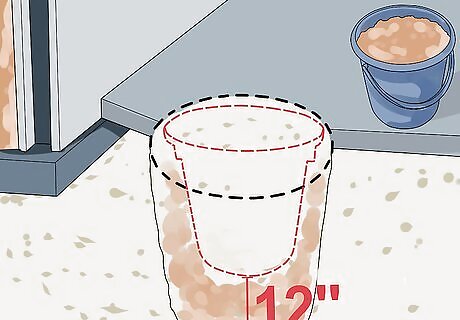
Dig the sump hole. You will want to dig the sump hole at least 12" deeper than the sump liner. Use 5 gallon (18.9 L) buckets to cart the debris outside. Place, or replace, some coarse gravel in the bottom of the hole, so that the sump liner sits flush with the basement floor when placed in the hole. This gravel will promote good drainage, and help water move into the sump where it can be pumped away (instead of moving into your basement at another spot). It may be difficult to dig the sump if the soil is sandy and wet. If water infiltration is causing the hole to erode there are a few options. You can wait for the soil to dry, dig faster than the water enters or use a garden hose. For the garden hose method, you will need to place the sump liner in the started hole and fill it with water. Then use a garden hose and push it under the liner. The water from the hose will push the sand out from under the liner and will stop the erosion. The weight of the liner will cause it to fall in the void underneath. As the liner drops into the ground you may have to wiggle the liner to keep it straight Depending on the liner used, you may have to drill numerous holes in the sump liner to allow water to enter so the pump can pump it away. The drilled holes should be smaller in diameter than the size of gravel used so that gravel does not come through.
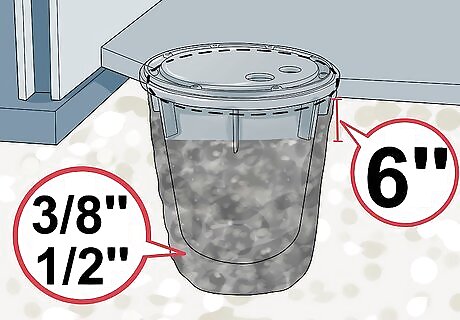
Seat the liner in the hole. Place gravel around the sides of the sump liner, coming up to about 6" below the level of the floor. Use any size of gravel between 3/8 and 1/2 inch.
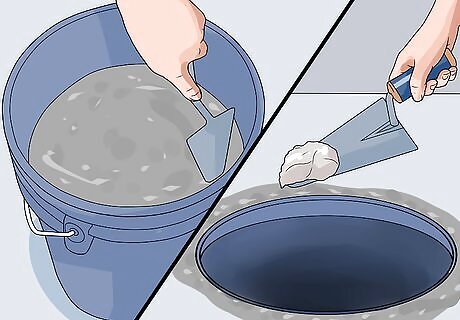
Concrete back over the floor. Mix your concrete, and pour a 6-inch layer of concrete over the gravel, filling in the floor up to the edge of the sump liner. Trowel the concrete to achieve a smooth surface. After the concrete has set up reasonably well (at least 8 hours), you may resume working on the sump.
Installing the Pump
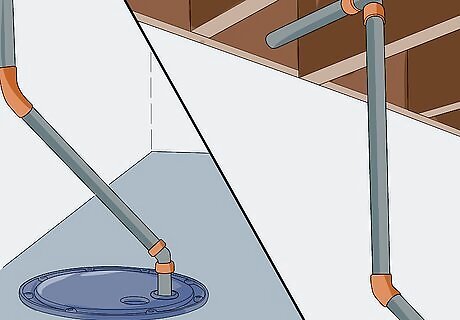
Assemble the PVC piping from the sump pump outlet through your home's rim joist. Most pumps use 1.5" PVC pipe, but review the instructions that came with your pump to be sure. Leave a short stub of PVC pipe on the outside, you can attach a flexible hose to go the rest of the way. When assembling the piping, be sure to dry-fit the entire section before gluing anything. Work in a well ventilated space, to minimize exposure to the solvent fumes and complete the seals with caulking agent on both the inside and outside contact points. The particular couplings will depend upon your house and foundation, which makes this a job for a fairly experienced DIY plumber. Use a hole saw with the appropriate sized bit to cut a hole through your siding and rim joist. It's usually best to bore from the outside in, using a 2 inch (5.1 cm) drill bit.
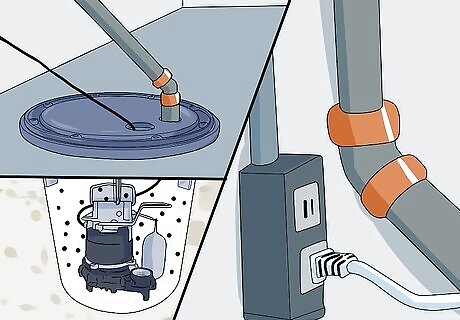
Install the pump. Place the pump in the liner, attach the final section of pipe, and plug your pump in. It may be necessary to drill numerous holes in the liner to enable water to get in to be pumped out. The diameter of the drilled holes must be smaller than the size of the gravel used so that no gravel can enter the sump liner.

Check the float position. Pumps come with different types of floats, but for any type it is important to ensure that the float on the pump is unobstructed so that it can rise and fall with the water level in the sump. Actually, this is the point of the sump pump. As water flows into the sump the float needs to be able to rise to a level that will activate the pump switch and fall back down without getting stuck between the pump and the sump liner wall. Usually it is a simple matter of just centering the pump in the sump liner, but it is best to double check your set up.
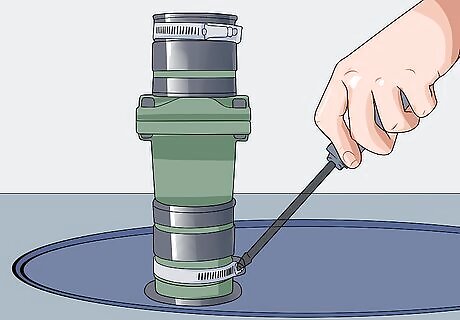
Install your check valve. This is a one-way valve used to expel the water left in the tube after the pump turns off, avoiding a motor burn out and an endless on/off cycle. Most check valves come with hose clamps and couplings, which feature directional arrows. Fix it appropriately on the riser and tighten it with a screwdriver. EXPERT TIP David Balkan David Balkan Professional Plumber David Balkan is a Professional Plumber, CEO of Balkan Sewer and Water Main Service, and President of Balkan Sewer and Drain Cleaning. As a hands-on owner of these companies for over 40 years, David is knowledgeable about water service lines, sewers, and drain line issues. David is a Committee Chairman of the Master Plumbers Council and has sat on the Executive Committee of the Sub Surface Plumbers Association of New York for over 30 years. His knowledge and solution-oriented approach contributed to Balkan Sewer and Water Main Service being the largest and most trusted service in New York City and the recipient of the 2017 Angie’s List Super Service Award. David Balkan David Balkan Professional Plumber Add check valves to pump outflows. Put a simple check valve on the outflow discharge pipe of any sump pump. This will stop water from flowing back into the sump pit after the pump shuts off. This keeps the area pumped dry.
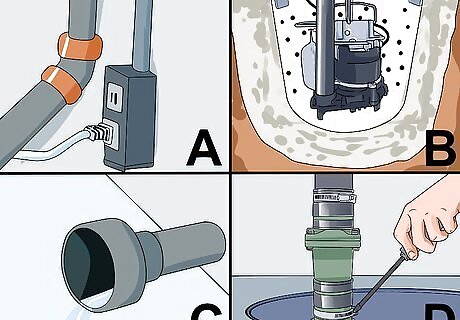
Plug in the pump and test your job. Fill a bucket with water and wet-test your rig. Check the piping for leaks and make sure it empties outside like you want it to, and that your check valve functions correctly when you shut it off.
Diagnosing the Problem

Check out your basement during a good rain. Most basement water problems aren't the result of problems in the basement, but the result of poor outdoor drainage. Before you go tearing up your basement, check to make sure you don't have other problems first. Make sure your gutters are unclogged and free of leaves and other debris, and that water can flow easily through them into the downspouts. Make sure your downspouts carry water far enough away from the house and that you're not getting back flow. The downspouts should dump water 4–5 feet (1.2–1.5 m) away from the foundation. Make sure the soil around your foundation slopes at least a couple of feet away from the house. If you've got pits that catch the water and force it downward, you might have problems getting water in your basement. Correct these issues before thinking about a sump.
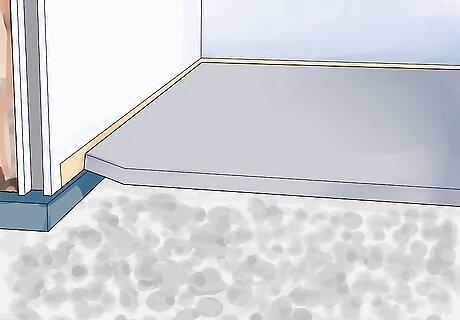
Determine if you've got a gravel foundation under your concrete floor. Most homes built in the last thirty years have foundations built upon a certain amount of gravel to correct for inconsistencies in the excavation process. If you've got contact with the builder of the home, you should be able to figure this out, or ask neighbors with similar homes whether or not this is the case. You might not know this until you break through the floor, which is another reason you want to explore alternatives before you get in over your head.
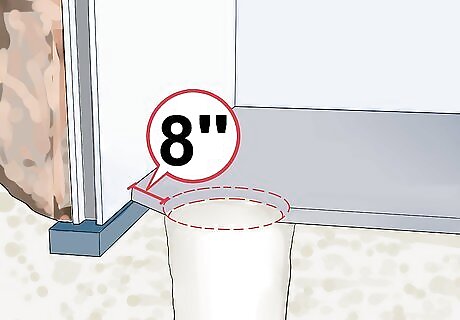
Look to see if you have a good location for a sump. You'll want to place the sump near a wall in the basement, since the sump pump discharge will need to exit the basement and travel at least 10 feet (3.0 m) outside to discharge. Look for a spot that will be easy to work in, and where you can punch a hole through a rim joist to reach outside. Stay at least 8" away from the foundation wall, to avoid hitting any footings. Make sure you're not going to cut into the waterline. If the water enters your home through the wall, you'll be fine, but check the building codes in your area to make sure where the line will be if it comes in under the home. Typically, the pipes will run from the street, 4–6 feet (1.2–1.8 m) away from the sewer pipe.



















Comments
0 comment